https://www.youtube.com/watch?v=hOGm2rFhY5U
How to Build a Patio - DIY Paver Patio _ The Home Depot
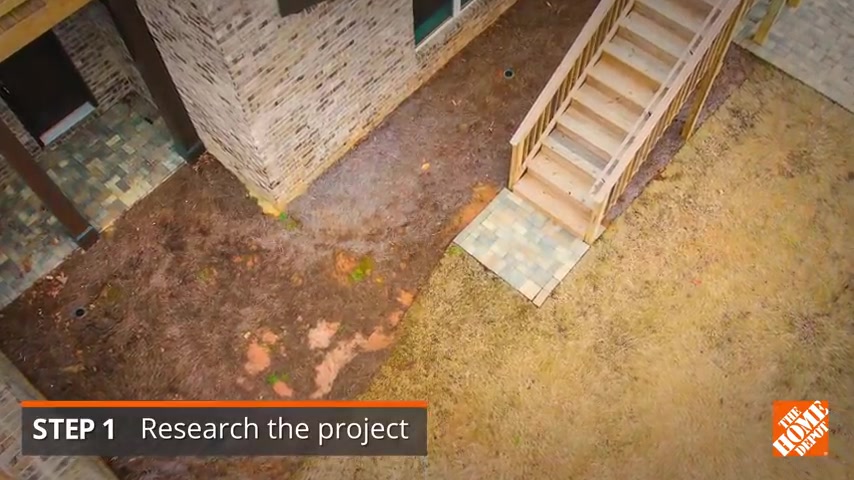
A patio made out of concrete pavers is both functional and stylish and it's an easy way to transform your outdoor living space for this project .
We're going to add to an existing patio built over a concrete slab before beginning .
Make sure there are no buried lines or cables .
You'll be disrupting and installing your patio .
Concrete pavers come in many different styles and a few thicknesses and they can be combined into a variety of patterns .
If you're installing over a concrete slab , you may need a thinner 30 millimeter paver to fit your door's threshold .
The rest of our patio will be built on the ground with a crushed gravel base , the same height as the concrete .
So all pavers will be at an even level as a guide stretch out a level string running from the edge of the slap to a stake placed at the outside edge of your patio .
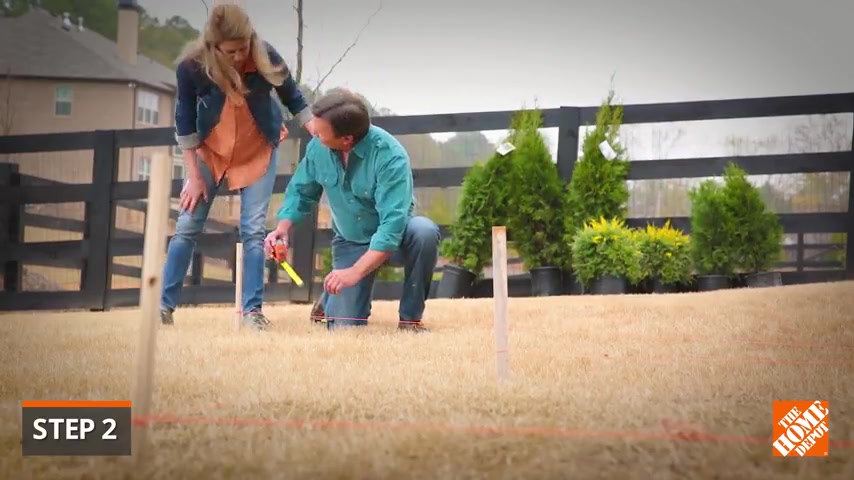
You may want to do this in a few places to ensure a consistent outcome .
If your patio will be exposed to the rain , lower the string by an inch or so every four ft to create a slope .
After marking off the dimensions of your new patio , remove all of the sod and dirt with a shovel down to a level of about seven inches below the surface .
You'll need to clear out any rocks or debris and compress the soil to create a stable surface for your patio .
For large areas like this , renting a plate compactor from the Home Depot will be a huge time saver .
At this point , you can lay down a weed barrier , but it's not required if you have a properly packed gravel base , fill the excavated area with a layer of crushed gravel , then spread it around evenly with a metal rake and wet it down thoroughly with a hose over the entire surface .
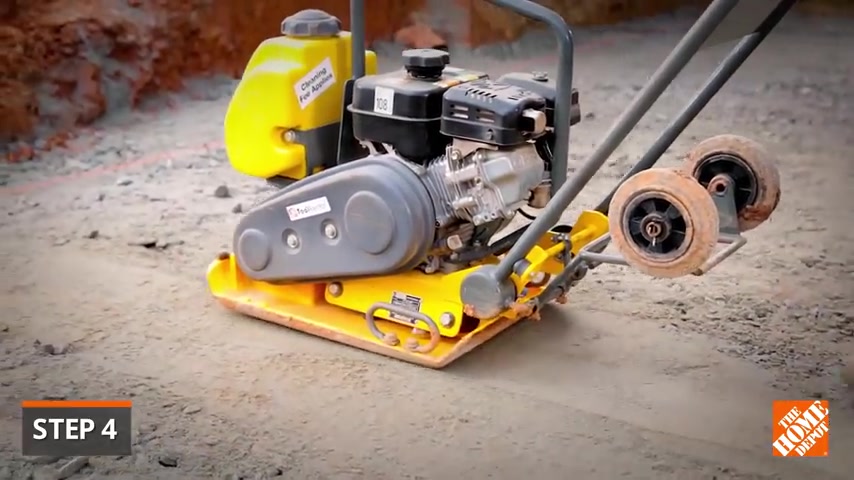
Now go over it with a plate compactor for small areas , you can use a hand tamper , continue the process throughout the whole patio area , adding to the gravel layer , wetting it and compressing it until you have a solid base built approximately two inches below your string guidelines .
Next , you'll create an even layer of fine paver sand for setting your pavers through a process called Reting .
For these next few steps , you'll want to work in small manageable sections , lay a couple of one inch pipes parallel to each other on top of the compact gravel , pour out just enough sand to cover them , then pull a two by four across the top to screed the sand .
The goal is a level even surface .
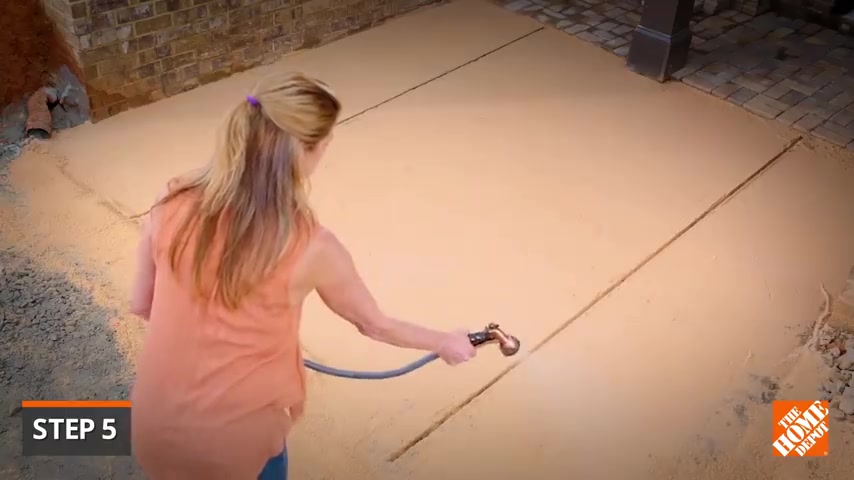
So backfill any gaps with additional sand and re screed the area until it's smooth without disturbing the screed layer , remove the pipes and lightly miss the sand to help hold it in place .
Now , you're ready to begin laying your pavers .
These often can be assembled in a variety of patterns .
So have a plan in mind before beginning , start in one corner against the house and work out placing pavers in rows and nudging them up against each other .
Check frequently with a level to make sure your pavers are installing evenly .
If necessary , you can add more sand below or tap down with a rubber mallet to bring them in line as you work carefully , fill in the valleys from the pipes with paver sand , then use a finishing towel to gently smooth the surface until the whole work area is nice and level between rows .
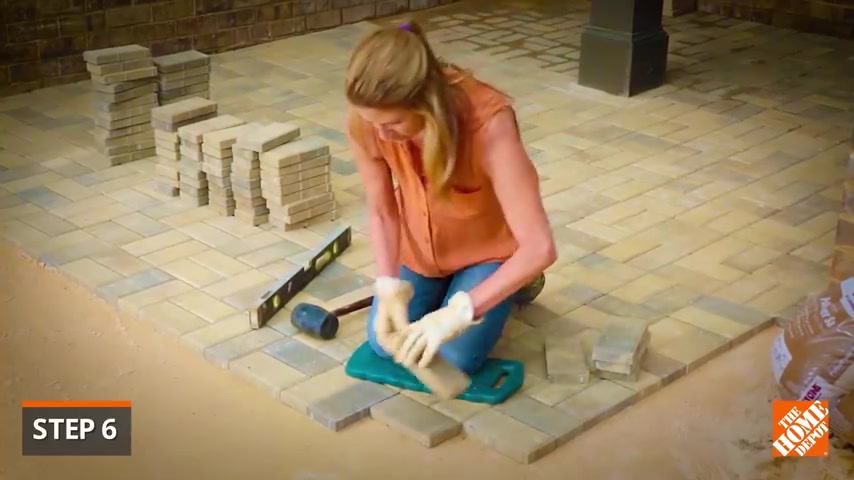
It's important to stagger the joints to provide maximum stability to the patio .
Here , we're creating a simple basket weave pattern with horizontal and vertical pavers in tight spaces .
You may need to cut pavers with a concrete saw to fit to hold the outside pavers in place , either install paver edging or create a trench along the perimeter with a brick trowel and fill it with cement .
This can be covered later with mulch or soil .
For the last step , the surface must be completely dry with no rain forecast for the next 24 hours .
Start by sweeping generous amounts of polymeric sand down into the joints between pavers , then carefully blow off any excess sand with a leaf blower .
Now spray the entire patio with a fine mist to activate the binding agents in the polymeric sand .
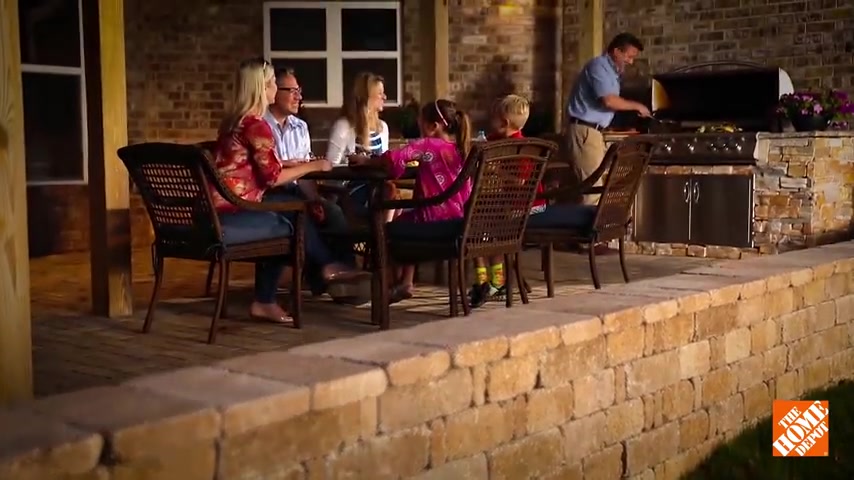
Allow 24 hours for the sand to fully cure and harden before using your new patio .
Then invite the neighbors over for a good old fashioned barbecue .
Are you looking for a way to reach a wider audience and get more views on your videos?
Our innovative video to text transcribing service can help you do just that.
We provide accurate transcriptions of your videos along with visual content that will help you attract new viewers and keep them engaged. Plus, our data analytics and ad campaign tools can help you monetize your content and maximize your revenue.
Let's partner up and take your video content to the next level!
Contact us today to learn more.